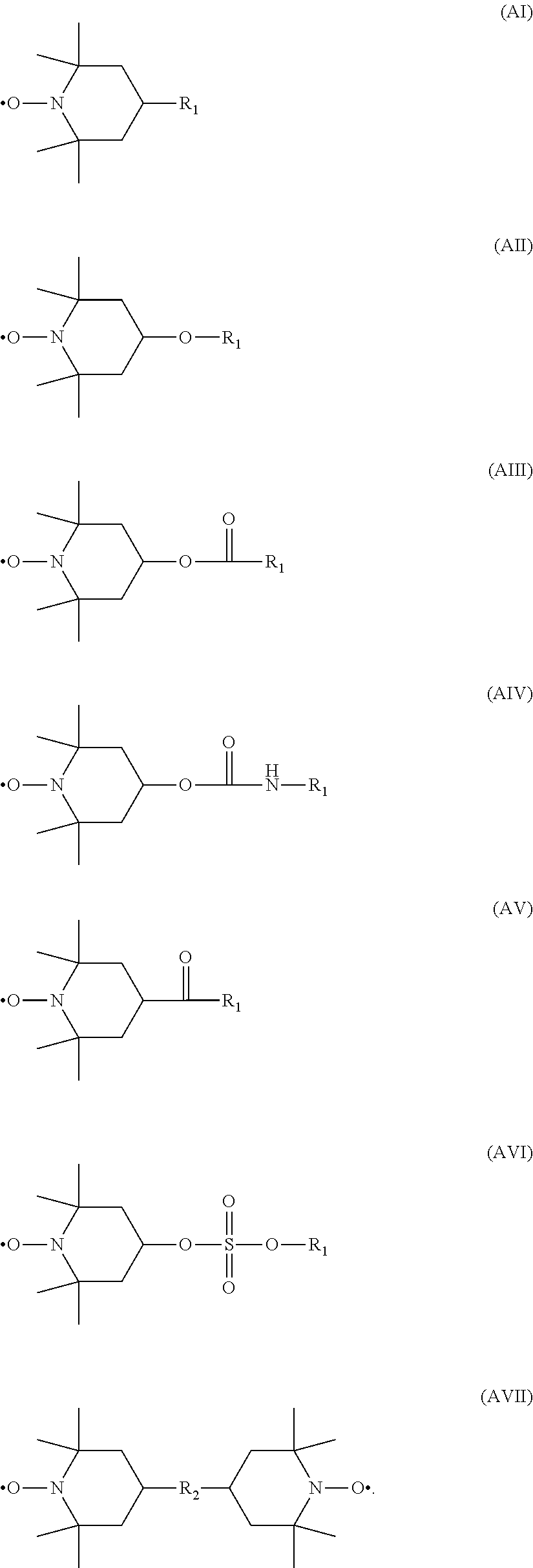Method for making heterophasic polymer compositions
- Summary
- Abstract
- Description
- Claims
- Application Information
AI Technical Summary
Benefits of technology
Problems solved by technology
Method used
Image
Examples
example 1
[0101]This example demonstrates the production of several polymer compositions according to the invention and the enhanced physical properties exhibited by these polymer compositions.
[0102]A total of eight polymer compositions (Samples 1A-1C and Comparative Samples 1A-1E) were produced using a heterophasic polymer composition, a second polymer composition containing post-consumer recycled polymer, a peroxide, and a compatibilizing agent. In particular, the heterophasic polymer composition was a polypropylene impact copolymer, namely Pro-Fax SG702 from LyondellBasell, which contained approximately 19% xylene solubles. The second polymer composition was a post-consumer recycled polypropylene available from Entropex LLC of Sarnia, Ontario, Canada. The peroxide was Varox DBPH available from Vanderbilt Chemicals, LLC. The compatibilizing agent was diphenylfulvene. The loading of the second polymer composition, peroxide, and compatibilizing agent in each polymer composition is set forth i...
example 2
[0105]This example demonstrates the production of several polymer compositions according to the invention and the enhanced physical properties exhibited by these polymer compositions.
[0106]A total of nine polymer compositions (Samples 2A-2F and Comparative Samples 2A-2C) were produced using various combinations of a heterophasic polymer composition, a second polymer composition containing post-consumer recycled polymer, a peroxide, and a compatibilizing agent. In particular, the heterophasic polymer composition was a polypropylene impact copolymer, namely Pro-Fax SG702 from LyondellBasell, which contained approximately 19% xylene solubles. The second polymer composition was a post-consumer recycled polypropylene available from Entropex LLC of Sarnia, Ontario, Canada. The peroxide was Varox DBPH available from Vanderbilt Chemicals, LLC. The compatibilizing agent used in each polymer composition is listed in Table 3 below. The loading of the second polymer composition, peroxide, and c...
example 3
[0109]This example demonstrates the production of several polymer compositions according to the invention and the enhanced physical properties exhibited by these polymer compositions.
[0110]A total of seven polymer compositions (Samples 3A-3C and Comparative Samples 3A-3D) were produced using various combinations of a heterophasic polymer composition, a second polymer composition containing post-consumer recycled polymer, a peroxide, and a compatibilizing agent. In particular, the heterophasic polymer composition was a polypropylene impact copolymer, namely PP7414 from ExxonMobil, which contained approximately 20% xylene solubles. The second polymer composition was a post-consumer recycled polypropylene available from Entropex LLC of Sarnia, Ontario, Canada. The peroxide was Varox DBPH available from Vanderbilt Chemicals, LLC. The compatibilizing agent was diphenylfulvene. The loading of the second polymer composition, peroxide, and compatibilizing agent in each polymer composition i...
PUM
| Property | Measurement | Unit |
|---|---|---|
| Fraction | aaaaa | aaaaa |
| Fraction | aaaaa | aaaaa |
| Fraction | aaaaa | aaaaa |
Abstract
Description
Claims
Application Information
 Login to View More
Login to View More - R&D
- Intellectual Property
- Life Sciences
- Materials
- Tech Scout
- Unparalleled Data Quality
- Higher Quality Content
- 60% Fewer Hallucinations
Browse by: Latest US Patents, China's latest patents, Technical Efficacy Thesaurus, Application Domain, Technology Topic, Popular Technical Reports.
© 2025 PatSnap. All rights reserved.Legal|Privacy policy|Modern Slavery Act Transparency Statement|Sitemap|About US| Contact US: help@patsnap.com



